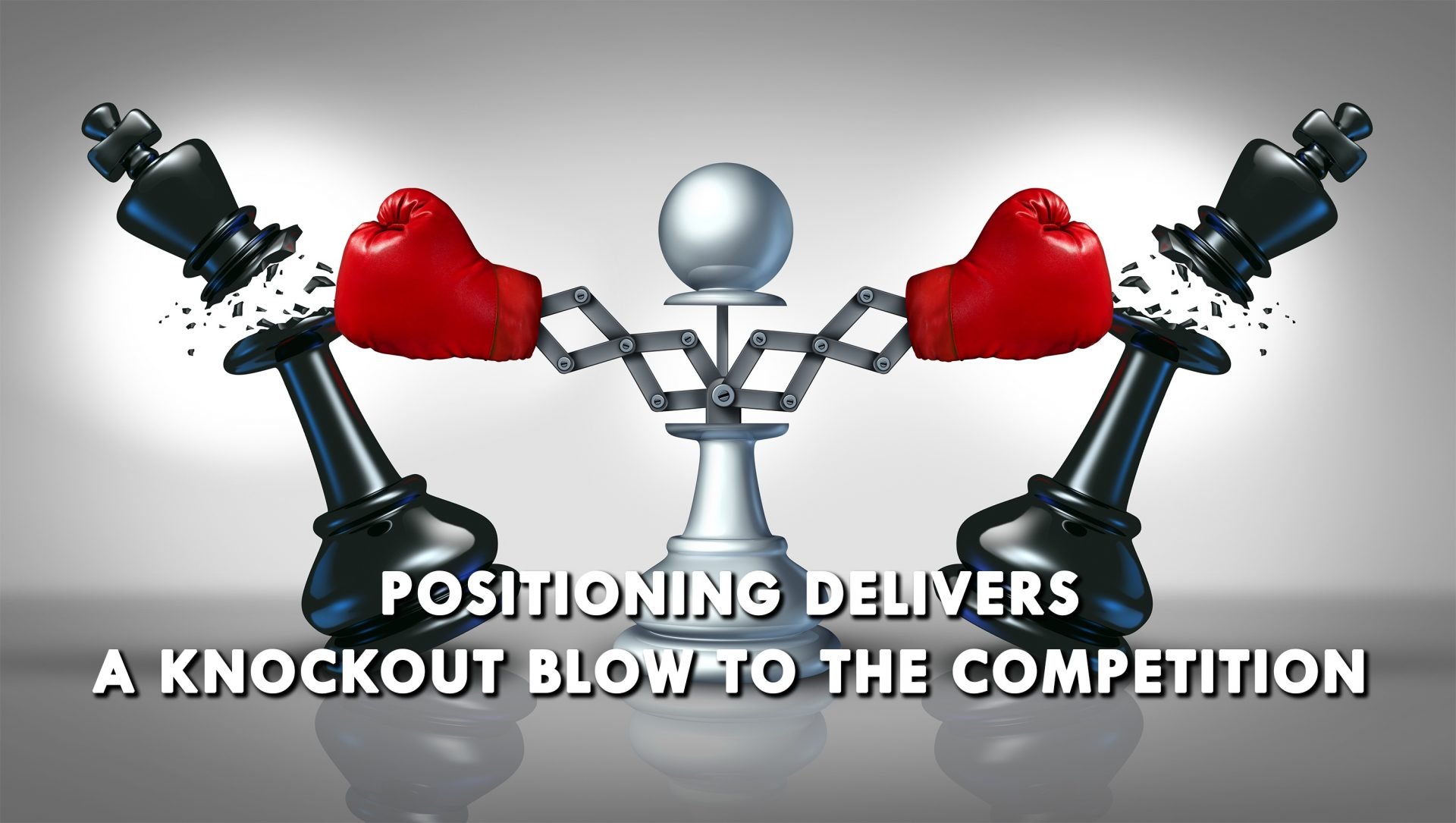Confused About Competition?
In The Positioning Matrix™, I talk a lot about the critical tactic of ‘de-positioning’ which is meant to influence the way your target consumers (or for agencies and consultants, your target client prospects) make their ‘purchasing decision’ about whether to buy or use your brand, product or service.
The essence of all Positioning Science is to influence consumers (I’ll use this term to mean all potential end-users, be they individuals or companies you are vying for to get their business) AWAY from your competitors and TO your brand.
Thus, a more refined understanding of the concept of competition is essential. It’s the key to success of any business, and absolutely essential to craft a Positioning Platform. After all, the whole point of creating a Positioning Platform is to crush your competition.
Remember that even if your brand or service is truly unique or fills a unique gap in any niche, there are always other brands or agencies offering something similar, and there may be other less-directly-similar ways consumers find what they need. A simplified example for agencies is that some clients may a) already have an agency but you want their business, or b) the client may be doing the work in-house, which in a funny way makes this client prospect a competitor to you.
All the different options a consumer has available to choose from are ‘competitors’.
When we think about competition, in order to understand how to de-position them and dispose consumers in favor of your brand, we need to understand TWO primary things:
1. What is the scope of competition you are fighting against
2. How and why consumers make their purchasing or product choice decisions
In this story I’ll address the first one, and we’ll get into the second one in a subsequent article.
SCOPE OF COMPETITORS
There are several schools of thought about how many different types of competition there are. At the most basic level some marketers look at only DIRECT and INDIRECT competitors, and to be technically accurate, if you include everyone else in the ‘indirect’ bucket, this works.
DIRECT competitors offer the same product or service that you offer with the SAME target as yours. Think ‘Coca-Cola vs Pepsi’, ‘Uber vs Lyft’ or ‘McDonalds vs Burger King’.
INDIRECT competitors offer products and services DIFFERENT than yours but targeting the same consumers and using the same consumer channels. Think ‘hotels vs Airbnb’ or ‘Burger King vs KFC’. The services are not the same, but they provide essentially similar opportunities to fill the same consumer need.
I think the ‘2-types-of-competitors’ model is not refined enough to craft a strong winning positioning or to really nail a Positioning Platform to crush the competition.
Other marketers add a third category ‘replacement competitors’, which is a hard type to identify, but can be very valuable, especially for a strong positioning. REPLACEMENT competitors are a subset of indirect competitors but are those who offer a SIMILAR or RELATED product or service than yours intended to displace you. Think ‘traditional taxis vs Uber’. The challenge of gaining competitive advantage over replacement competitors is not convincing consumers to use or buy your specific brand, product or service, but to get them to use your type of service at all.
I like to add 2 more types of competitors: the SEO competitor and the CLIENT competitor.
SEO competitors compete with you for organic search results. Let’s use the Airbnb example. Do a search on Google for “vacation rentals in Florida”, for example. Airbnb doesn’t surface in the money positions. SEO competitors such as Trip Advisor, or Expedia will almost always show up higher.
In fact, SEO competitors can be both DIRECT and INDIRECT competitors, such as Wikipedia, or unrelated news, review sites, or completely unrelated topics that have organic signals for your target keyword searches. As these take valuable organic real estate above you, they must be considered competitors even though you might not initially think of these when you create your competitor list for competitive research.
And lastly, CLIENT competitors are a challenge as well, although this type of competition is more relevant to the selling process than the core brand marketing challenge. CLIENT competitors are those who ‘do it in house’, but really might benefit from using your services.
I’m sure that experienced marketers can come up with many more permutations of types of competitors, but I’ve found over 25 years in high level marketing that the 5 categories described above are more than sufficient to identify all the types of competitors, and then the specific competitors in each category that present the most urgent targets to de-position.
‘They’ say that competition is good and it drives business. Meh. I say that if your business objective is to make more revenue, you need to gain competitive advantage and preempt your targets from considering any brand but yours.

